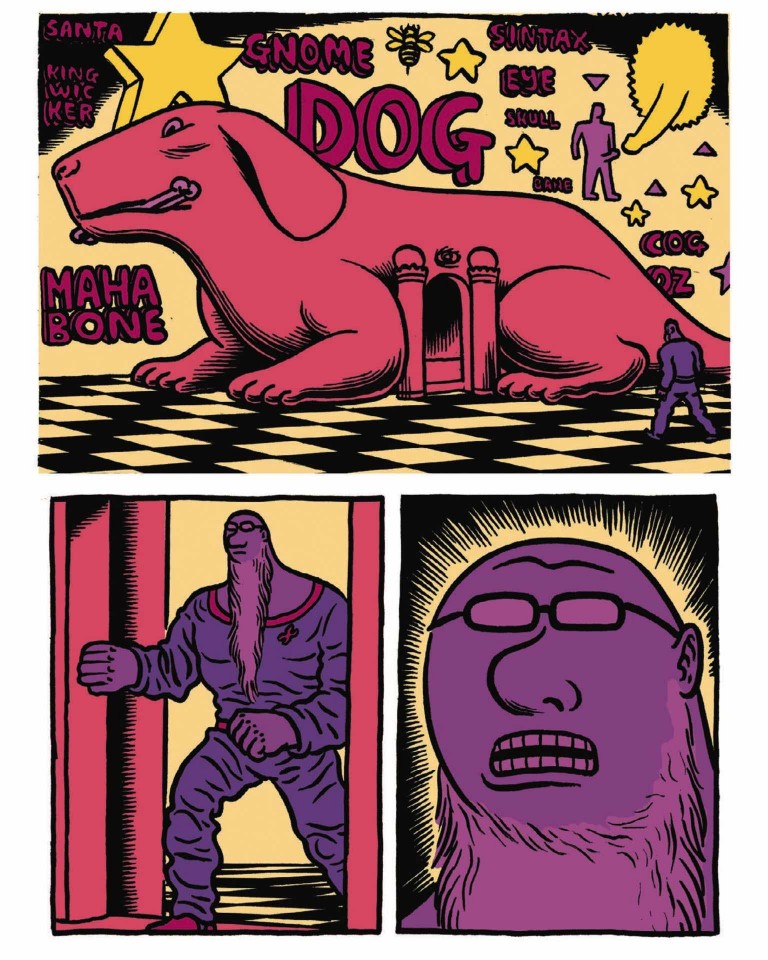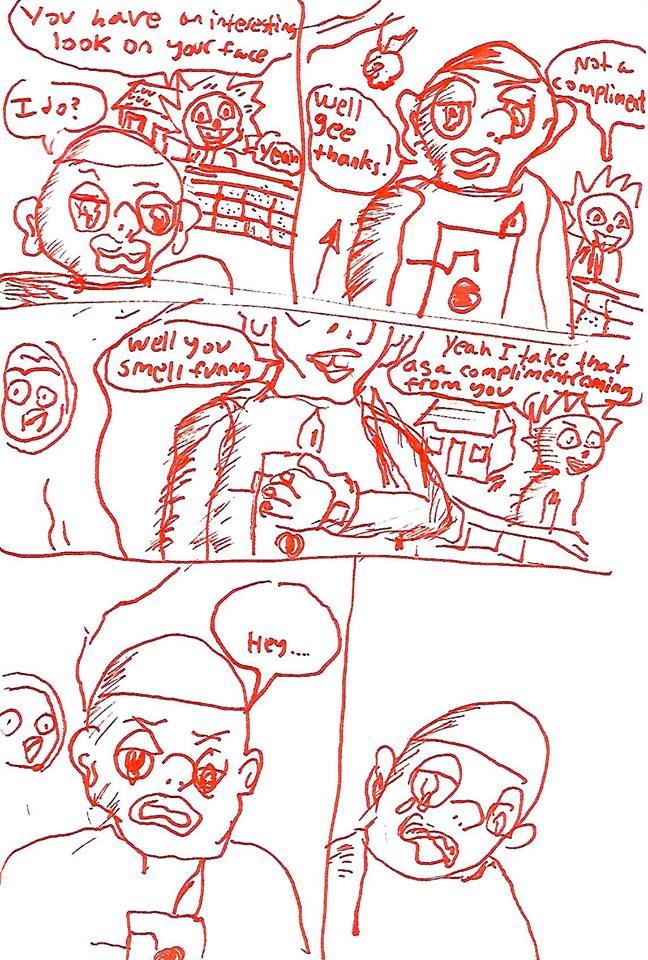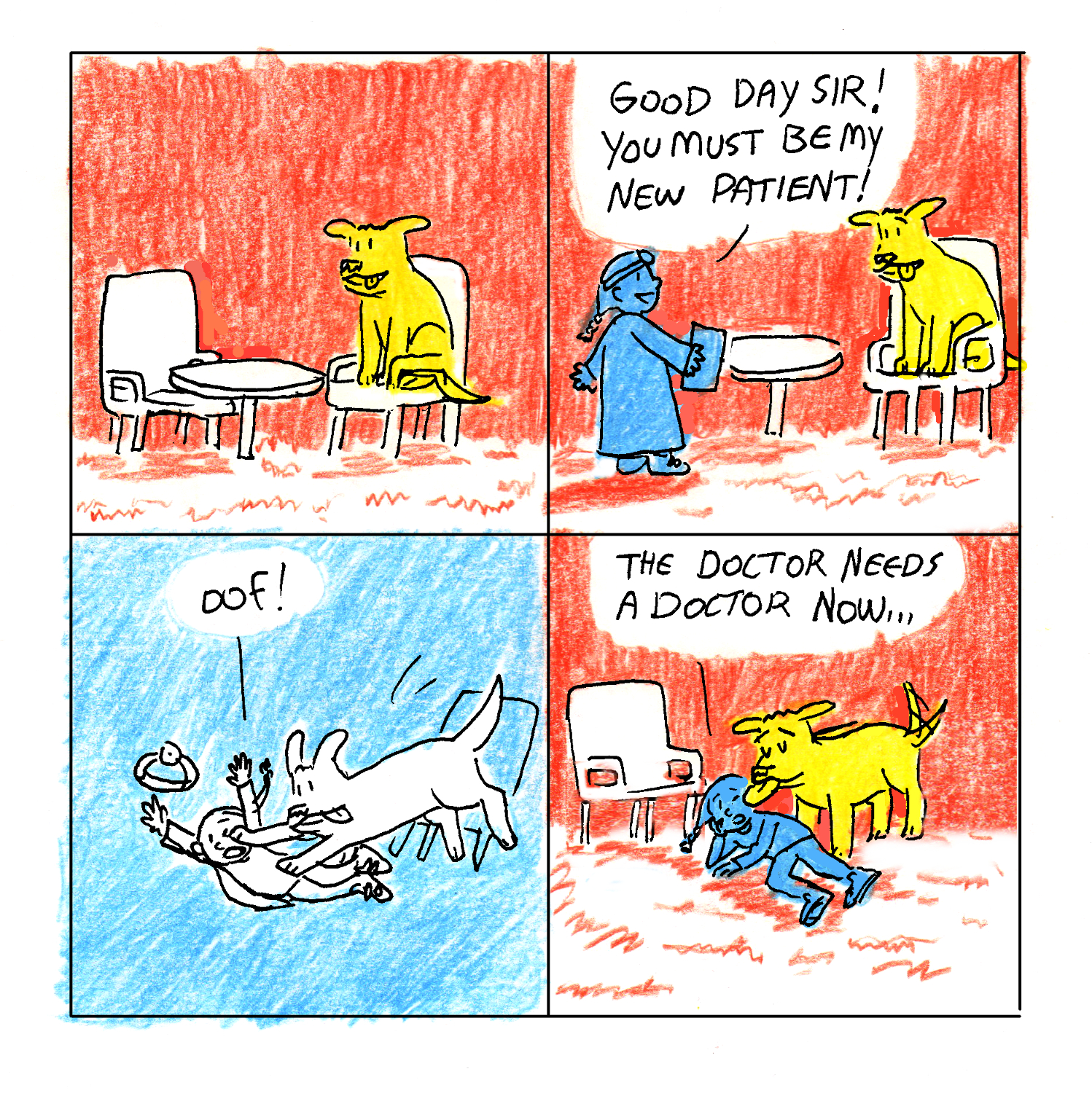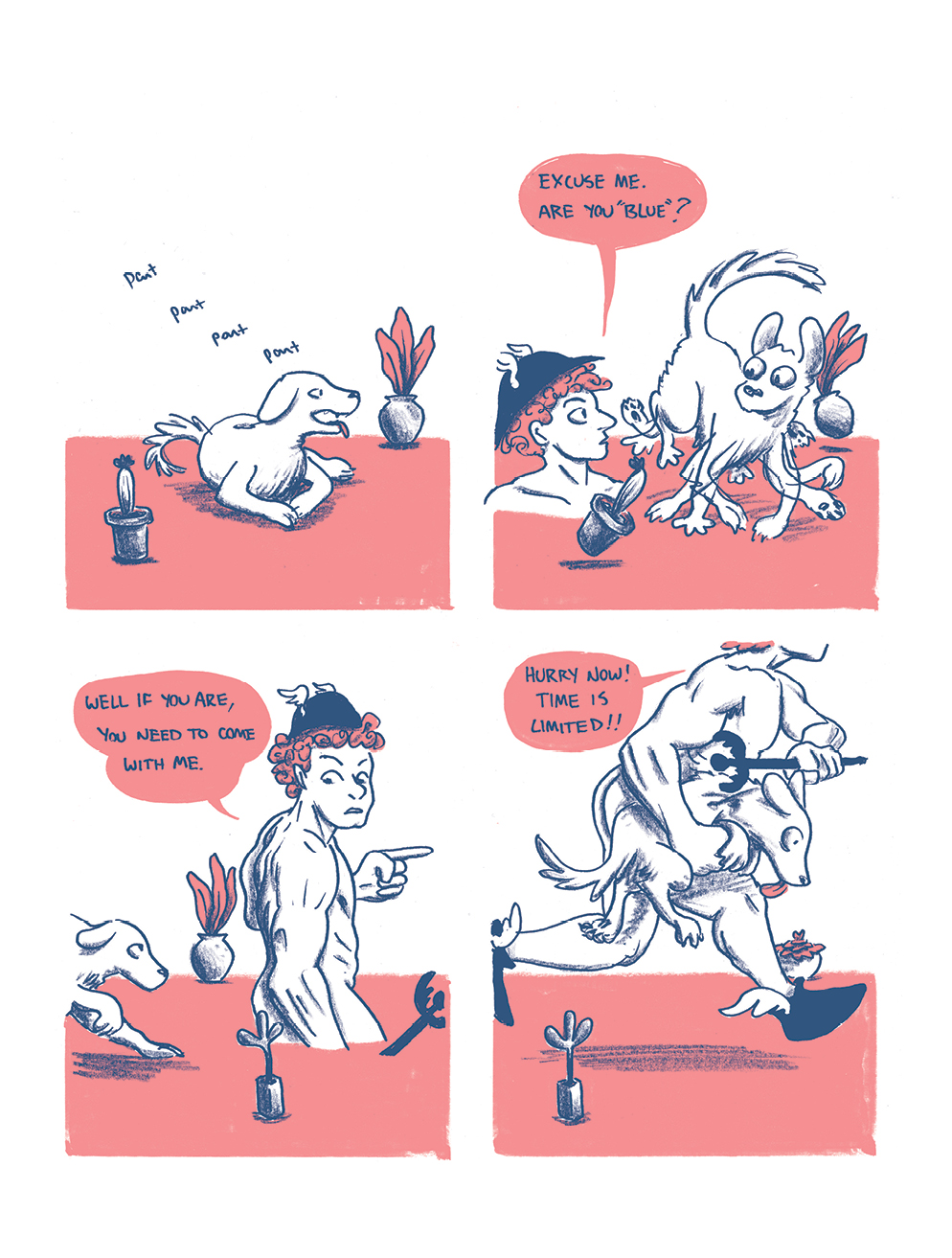Sam Ombiri on Joe Daly’s Highbone Theater, an international zine roundup, Wonder Woman dreams, and news from Berliac.
—————————————————————————————————
Sam Ombiri here: I read Highbone Theater by Joe Daly recently. I began it awhile back when Joe Daly was posting it online, but the way Daly set up his website for Highbone Theater made it hard to find where you left off at. The funny thing with that was that I’d just end up re-reading the same pages. The same really good pages. I guess it was maybe a selling point, because it feels very real. I’m not sure if it’s part autobiographical, because it’s not so apparent and that makes me more keen to apply what’s happened to me, myself, and relate it with Palmer (the main character).
The dialogue is so natural, and the way Daly guides you through what’s being said seems like it’s collaborating with life. It’s so mundane that it becomes all too real. It seems like it’s way more dense than it is really, because of the size of the book, but it’s so rhythmic, and it sucks the reader in so that you barely even notice that you’re flipping the pages. You start it, and you keep going, and you don’t feel the big obligation to take note of anything. Or that may be inaccurate, since you are supposed to, as a reader, take note of what’s happening in the narrative. I didn’t catch so much that the colored pages were adding an extra meaning to the atmosphere changing, other than, something’s up, tonally and design wise. Color is the equivalent of sound design. I once heard Joe Daly cite Naked Lunch as a movie he’s really impressed with, so this was at the back of my mind while reading Highbone Theater. It’s a very cinematic comic, which may be attributed to Daly studying animation. Whatever it was that caused it, I’m glad.
Palmer is into the things he’s into, him and his friends are into the things they’re into, and every now and then the friends comment on Palmer’s eccentric interests. While they see less reason in Palmer, Palmer sees less reason in the world he’s living in, and while many others can reason with him, he finds he can’t reason with anyone besides his friend Billy. The way Daly portrays Palmer is as someone who isn’t an unreasonable guy – but when Palmer talks, the way he portrays himself when talking about himself (which is part of why the book feels like it’s autobio) comes off as unreasonable – but that doesn’t hinder him from performing what he perceives as his duty. That was the defining characteristic I found with Palmer.
What set this apart is that the book seems so casual, as if it’s ideas are taking place with no regard to your opinion of them. Yet they are coming from a very disciplined story teller. Everything that sets this book apart doesn’t come off as overly intentional, or meant to be set apart. What’s taking place seems independent of the reader’s thoughts on them. This only strengthens the potency of the events as perceived by the reader. What seems more intentional is to engage with the reader in a way that’s very familiar to them. Or maybe it’s just that this form happens to be familiar. It reminded me of reading Chester Brown’s autobio stuff, or Crumb, or it’s as if I was told that one of the characters is the Reid Fleming of this universe.
The cover is really cool – it reflects what you’re in for. Of course most covers do that, but as you open this book it’s with these specific images that come later on in the book. The front cover – while it’s an image that shows up through the course of the book – seems to be there more so to sell you on the book. The image that follows, however, before the story has started, has been ingrained in the reader. Right now I’m talking about the coffin Billy crafted for his mother. When it comes into the story later on and makes another appearance, there was something big that went off in my mind. While the turns the book takes are huge, there’s a subdued element to it, right? While it may seem disorienting, it’s a really well oriented form of disorienting. Palmer has this look on his face that says this must be done, and that’s reflected with every action he performs. He has a no nonsense approach to everything. He sees the task before him, he tries to find what needs to be done above all his other concerns, and what he needs to do is a growing question mark. – Sam Ombiri
Get a copy if this book at Copacetic Comics!
—————————————————————————————————
6-1-2017 – by Sam Ombiri
—————————————————————————————————

Sally here – check out this roundup of 8 zines made by people of color from around the world, showcased on Artsy – a true example of why the medium remains relevant and important.
“The black literary zine, Fire!! created during the Harlem Renaissance of the 1920s by writers such as Langston Hughes and Zora Neale Hurston is an early example. Self-publishing continued through the decades, with the Black Panther Party Newspaper and the Chilean women’s magazine Aquelarre. Still, the history of zine culture remains largely dominated by narratives of white men and women.
Utilizing both the tangibility of print and the connectedness afforded by the internet, today’s artists and writers of color are continuing to create spaces for dialogue, pioneering conversations through zines—a medium that allows them to exchange ideas, opinions, and art on their own terms. These eight zines are just a few of the notable print publications claiming space and reinvigorating a decades-long tradition of collective healing through communal expression.“
—————————————————————————————————

Maya Rupert writes movingly for The Atlantic about her lifelong connection to Wonder Woman and her feeling that maybe the character makes more sense as a black woman.
“Wonder Woman and I were both outsiders on two levels. Her powers set her apart from other humans, but among the other members of the Justice League, she was relegated to secretary. My race set me apart from my white classmates, but I learned at a young age that within the black community my gender marked me as inferior. I remember as a child being told by my hairdresser that feminism wasn’t for black women. “For us,” she explained, “the man is here, and we’re here,” she said gesturing with her hands to illustrate that to be a black woman meant that a man I had never met would always be stationed above me. As I got older, I became better able to name my double displacement; I was frustrated with the racism I saw in feminist circles and with the misogyny I saw among racial-justice advocates. And Wonder Woman’s state of constant otherness only became more meaningful.
But as a girl, I most commiserated with Wonder Woman when she sought to reconcile her inner strength and ferocity with the need of others to see her as peaceful and feminine. I had learned early on that it wouldn’t take a lot for me to be viewed as angry and deemed unlikeable. Images of neck-rolling, finger-snapping, gum-popping black women caricatured in movies and TV shows showed me exactly what people expected from me.“
Read more HERE – and go see the new Wonder Woman movie (opens June 2nd!), which does star a white woman, but there is perhaps some hope for the flick and the story –
“Yes, a white actress, Gal Gadot, had been cast as the lead. But, I wondered, would the creators see in her what I had all these years? Would Wonder Woman still chafe at the forced dichotomy between her strength and her womanhood, her peaceful demeanor and her righteous anger? Would they infuse her story with enough of mine that a little black girl who sees the movie might get to wonder, maybe?“
—————————————————————————————————
Drawn & Quarterly will publish Berliac’s Sadbøi in January 2018. “Drawn in a unique style that’s an homage to gekiga and film noir, Berliac’s first English graphic novel is an exploration of how we treat immigrants, and the impossible situation of being expected to conform to society’s ideals when the world has already decided you’re guilty.” More of the announcement and an excerpt from the book can be found HERE.
—————————————————————————————————
Blinkers – 6-1-2017 – by Jack Brougham
—————————————————————————————————
Suzy and Cecil – 6-1-2017 – by Gabriella Tito
—————————————————————————————————
Joanie and Jordie – 6-1-2017 – by Caleb Orecchio






